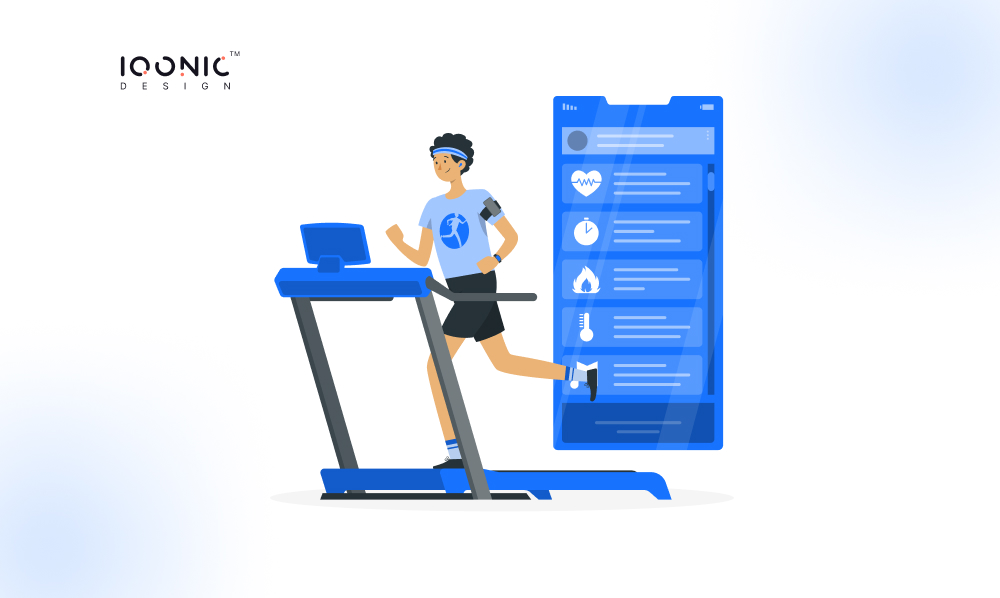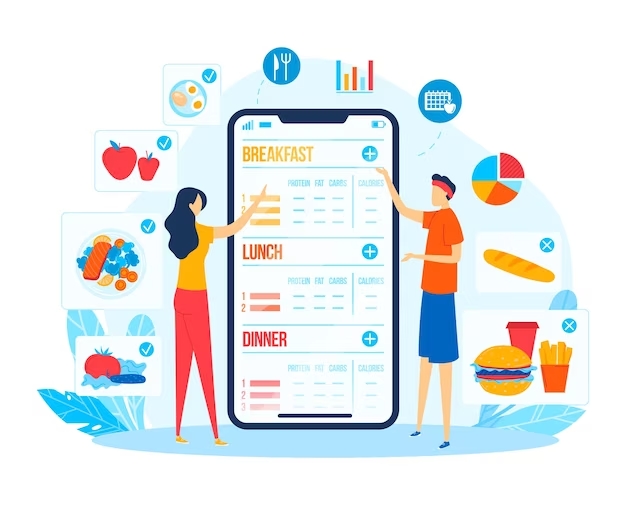
How to Make a Fitness App That Inspires Users: A Full Guide
In today’s health-conscious society, where wellness is a prevailing aspiration, fitness apps have emerged as invaluable tools in helping individuals embark on a healthier lifestyle. With the convenience of smartphones and the desire for a fitter self, these applications have become an integral part of countless lives, aiding users in achieving their fitness goals with a tap and a swipe. From tracking workouts and nutrition to offering personalized guidance, fitness apps have revolutionized how we approach health and fitness.
This blog aims to delve into the art of creating fitness apps that go beyond mere functionality. We aim to guide you on a journey towards developing a fitness app that assists users and inspires and motivates them throughout their fitness odyssey. To accomplish this, we’ll explore the psychology behind user motivation, uncovering the essential insights that will enable you to craft an app that fosters lasting commitment and enthusiasm.
Understanding User Motivation
Motivation in fitness is a powerful force, often driving individuals to set ambitious goals, break sweat, and embrace healthier habits. To create a fitness app that truly resonates with users, it’s crucial to delve into the psychology of motivation.
At its core, motivation in fitness is a blend of intrinsic and extrinsic factors. Intrinsic motivation comes from within, fueled by personal goals, a sense of accomplishment, and the sheer joy of physical activity. Extrinsic motivation, on the other hand, arises from external rewards like praise, competition, or even tangible incentives.
Understanding these diverse motivational forces is essential because it enables you to tailor your fitness app to different user preferences. Some users may thrive on competitive challenges, while others may seek a more personal, introspective approach to their fitness journey.
By grasping the intricacies of motivation, you’ll be better equipped to design an app that not only caters to the various motivational triggers but also helps users transition from extrinsic to intrinsic motivation—a pivotal shift that fosters long-term commitment and success. In the following sections, we’ll explore leveraging this understanding to create an inspiring fitness app that keeps users engaged and motivated.
Setting Clear Goals
1. Essential for Motivation:
Clear fitness goals are the cornerstone of motivation. They give users a sense of purpose and direction in their fitness journey.
2. App-Integrated Goal Setting:
Our app incorporates a user-friendly goal-setting feature. Users can define specific objectives, such as weight loss, muscle gain, or running a certain distance.
3. Tracking Progress:
Our fitness app provides real-time tracking and updates once goals are set. Users can see their achievements and how far they are from reaching their goals.
4. Celebrate Milestones:
Celebrating small victories keeps users motivated. We encourage users to celebrate their progress, no matter how minor.
User-Friendly Design
1. Intuitive Navigation:
Our app boasts an intuitive interface requiring no manual instruction. Users can effortlessly locate their desired items with minimal exertion.
2. Visually Appealing:
Aesthetics matter. We’ve ensured our fitness app is visually appealing with a clean and modern design, using motivating colors like blue and green.
3. Simplicity Is Key:
We believe in the power of simplicity. Complex menus and options can be overwhelming. Our app’s design keeps things straightforward, focusing on the essentials.
4. Customizable:
While simplicity is key, we also understand that users have unique preferences. Our app allows for customization, so users can tailor their experience.
5. Clear Progress Tracking:
Users can easily see their progress at a glance, whether it’s steps taken, calories burned, or workout history. This transparency fosters motivation.
6. Responsive Support:
An intuitive design is also about responsiveness. Users can expect quick and effective customer support through our app, ensuring a smooth experience.
In summary, setting clear goals and a user-friendly design are pivotal in creating an inspiring fitness app. Clear goals provide motivation, and user-friendly design ensures users can navigate the app effortlessly, staying engaged on their fitness journey.
Personalization Features
1. Benefits of Personalization:
Personalization is the secret sauce that inspires fitness apps. It acknowledges that every user has unique fitness needs and preferences.
2. Tailored Workouts:
Our app excels in providing personalized workout plans. Users answer questions about their fitness goals, fitness level, and equipment availability, and the app generates a customized workout plan.
3. Individualized Nutrition:
Personalization isn’t limited to workouts. We also offer personalized nutrition plans. Users input their dietary preferences, allergies, and goals, and the app suggests meal plans tailored to their needs.
4. Motivation Boost:
Personalization boosts motivation because users feel the app understands and cares about their journey. It’s like having a personal trainer and nutritionist in their pocket.
5. Implementing Personalization Algorithms:
Our fitness app uses advanced machine learning algorithms that analyze user data, such as workout performance, nutrition choices, and progress. These algorithms continuously adapt recommendations to align with users’ needs and goals.
Tracking Progress and Achievements
1. Motivation through Measurement:
Tracking progress is a potent motivator. Users who see how far they’ve come are more likely to stay committed to their fitness regimen.
2. Progress Charts:
Our app offers detailed progress charts that visualize fitness achievements over time. Users can easily track weight loss, muscle gain, or endurance improvement metrics.
3. Achievement Badges:
We’ve gamified the progress-tracking process with achievement badges. Users earn badges for reaching specific milestones, such as completing a certain number of workouts or maintaining a consistent routine.
4. Competition and Accountability:
Some users thrive on competition. Our app allows users to compare their progress with friends or a community, fostering a sense of accountability and camaraderie.
5. Continuous Feedback:
Besides charts and badges, our app provides continuous feedback and recommendations based on users’ progress. This guidance helps users stay on the right track.
Incorporating personalization features and robust progress-tracking mechanisms enhances user motivation and creates a more engaging and tailored fitness app experience. These elements ensure that users feel supported and encouraged on their fitness journey.
Engagement and Gamification
1. Gamification for Engagement:
Gamification elements are like the turbo boosters of fitness apps. They take user engagement to the next level by injecting fun and competition into the fitness journey.
2. Example: Leaderboards and Challenges:
Many successful fitness apps incorporate leaderboards that rank users based on their performance. Users compete with friends or a broader community, sparking friendly rivalries and motivation. Challenges, such as “30-Day Ab Challenge” or “Virtual Races,” encourage users to push their limits.
3. Rewards and Badges:
Reward systems and badges are popular in gamified fitness apps. Users earn rewards or virtual badges for completing workouts, hitting milestones, or maintaining consistency. These small victories keep users motivated.
4. Progress-Based Games:
Some fitness apps create games around exercise. Users might need to complete certain workouts or reach fitness goals to progress in the game, making workouts feel like quests.
5. Narrative and Storytelling:
Story-driven apps weave fitness into a narrative. Users follow a story-line and make progress as they achieve fitness goals. It’s like being the hero of your fitness adventure.
Social Integration
1. The Power of Community:
Social integration is a potent tool for motivating users. It taps into our inherent need for social connection and support.
2. Sharing Workouts:
Our app allows users to share their workout achievements on social media. This not only celebrates their progress but also inspires others to get active.
3. Challenges and Competitions:
Users can create or join fitness challenges with friends or a broader community. Whether a step challenge or a weight loss competition, these features foster friendly competition and accountability.
4. Community Support:
In-app communities or forums provide users with a space to connect, share experiences, seek advice, and offer encouragement. It’s like having a virtual fitness support group.
5. Expert Guidance:
Social integration enables users to connect with fitness experts or trainers for guidance and motivation. Virtual coaching and interaction enhance the app’s value.
By incorporating gamification elements and social integration features, your fitness app becomes not just a tool for exercise but a vibrant, motivating community that users eagerly participate in, ultimately leading to better fitness outcomes.
Nutrition and Diet Planning

1. Diet's Role in Fitness:
A holistic fitness app recognizes that diet is just as crucial as exercise. Nutrition directly impacts fitness goals: weight management, muscle gain, or improved endurance.
2. Comprehensive Approach:
Our app offers integrated nutrition and meal planning features. Users can input their dietary preferences, allergies, and goals, and the app generates personalized meal plans and tracks calorie intake.
3. Nutritional Insights:
We go beyond meal planning by providing nutritional insights. Users can learn about the nutritional value of different foods and make informed choices.
4. Progress Tracking:
Our app tracks dietary progress like workouts. Users can see how well they stick to their meal plans and make necessary adjustments.
Safety and Privacy
1. User Data Security:
User trust is paramount. Data security and privacy are the utmost priorities for our app.
2. End-to-End Encryption:
User data is encrypted end-to-end, meaning it’s protected during transmission and storage.
3. Strict Access Controls:
We implement strict access controls to ensure that only authorized personnel can access user information.
4. Regular Audits:
Our systems undergo security audits to identify and address vulnerabilities.
Testing and Feedback
1. Beta Testing:
Before launching updates, our fitness app undergoes extensive beta testing. This involves a group of dedicated users who provide feedback on new features and identify any issues.
2. User Feedback Loop:
We’ve established a robust feedback loop. Users can easily report bugs, suggest improvements, or share their experiences.
3. Continuous Improvement:
User feedback is invaluable. It fuels our commitment to continuous improvement. Every update is designed to enhance the user experience, making the app even more inspiring and effective.
Conclusion
By addressing the importance of nutrition, ensuring user data security and privacy, and actively seeking and acting upon user feedback, our fitness app is inspiring but also trustworthy and user-centered.
In conclusion, creating a fitness app that truly inspires users involves a multifaceted approach. We’ve explored key elements, including understanding user motivation, setting clear goals, user-friendly design, personalization features, progress tracking, gamification, social integration, nutrition planning, safety, and continuous improvement.
The significance of crafting an inspiring fitness app cannot be overstated. Such an app empowers users to enthusiastically embark on their fitness journeys, provides unwavering support, and fosters community. Ultimately, it’s not just about helping users achieve their fitness goals; it’s about motivating and guiding them to a healthier and happier life.






